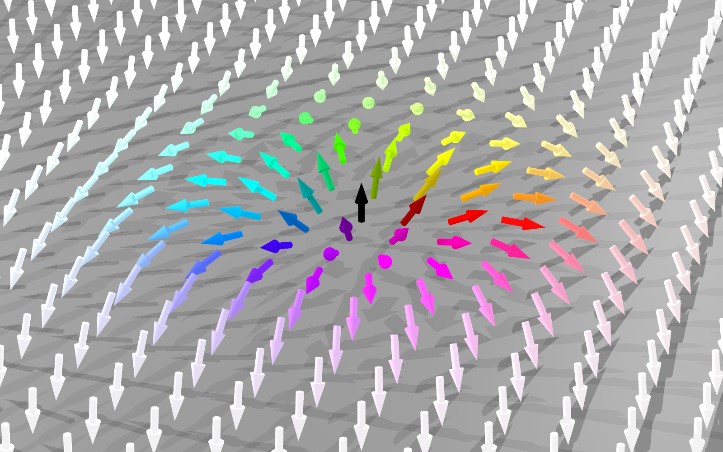In a conventional disk drive, data is stored in stationary magnetic domains on a mechanically spinning disk. In a solid-state version of this called “racetrack memory,” researchers envision that it’s the magnetic domains that would move through a stationary wire (the racetrack), driven by a small electric current. Ideally, such a system would offer higher performance and higher capacity in less space while using less energy. In practice, however, the magnetic domains tend to “stick” upon encountering microscopic imperfections in the wire, degrading performance.
A promising way around this obstacle is to replace the magnetic domains with skyrmions—magnetic vortex structures that can skirt isolated defects or unevenness in the material. Skyrmions, however, have previously only been observed in a few exotic materials at low temperatures, and fast, current-driven motion of individual skyrmions had yet to be demonstrated.
Now, a collaboration between groups from MIT, Johannes Gutenberg University Mainz (Germany), and the Materials Sciences Division at Berkeley Lab have used x-ray microscopy tools at ALS Beamline 6.1.2 and at BESSY in Berlin to demonstrate, for the first time, the ability to generate stable skyrmion lattices at room temperature and to drive trains of individual skyrmions using short current pulses along a magnetic racetrack at speeds exceeding 100 m/s. The work demonstrates that individual skyrmions can indeed be moved in a controlled manner along a magnetic wire, paving the way for the use of skyrmions in future spintronic applications.

Work peformed at ALS Beamline 6.1.2.
Seonghoon Woo, Kai Litzius, Benjamin Krüger, Mi-Young Im, Lucas Caretta, Kornel Richter, Maxwell Mann, Andrea Krone, Robert Reeve, Markus Weigand, Parnika Agrawal, Ivan Lemesh, Mohamad-Assaad Mawass, Peter Fischer, Mathias Kläui, and Geoffrey S.D. Beach, “Observation of room-temperature magnetic skyrmions and their current-driven dynamics in ultrathin metallic ferromagnets,” Nat. Mater. 15, 501 (2016).